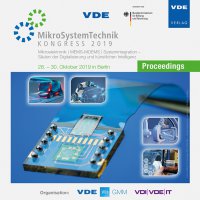FEM Modeling of Microbolometer Structures
Konferenz: MikroSystemTechnik 2019 - Kongress
28.10.2019 - 30.10.2019 in Berlin, Deutschland
Tagungsband: MikroSystemTechnik 2019
Seiten: 3Sprache: EnglischTyp: PDF
Persönliche VDE-Mitglieder erhalten auf diesen Artikel 10% Rabatt
Autoren:
Kaynak, Canan Baristiran; Goeritz, Alexander; Yamamoto, Yuji; Trusch, Andreas; Stocchi, Matteo; Wietstruck, Matthias (IHP – Leibniz-Institut für innovative Mikroelektronik, 15236 Frankfurt (Oder), Germany)
Unal, Kadir Ere; Ozdemir, Mehmet Bora; Ozsoy, Yusuf; Gurbuz, Yasar; Kaynak, Mehmet (IHP – Leibniz-Institut für innovative Mikroelektronik, 15236 Frankfurt (Oder), Germany & Sabanci University, Orta Mahalle, Tuzla 34959, Turkey)
Inhalt:
This paper presents different geometrical designs for microbolometer in order to analyze mechanical and thermal behavior of the device. The simulations are performed on amorphous silicon based microbolometers with a pixel size of 12 µm × 12 µm by using finite-element-method (FEM) solver, ANSYS(r). The design differences are basically the change of the arm’s length of the microbolometer, namely, half-sided, one-sided, and two-sided. The arm structures are consisted of three layers; silicon nitride/titanium nitride/silicon nitride (Si3N4/TiN/Si3N4). The mechanical part of simulations consisted of implementing residual stresses that arise after the deposition on different microbolometer models. The output from the mechanical simulations is the determination of deformations for X-Y, and Z planes and the total stress. The thermal-electric modeling provides thermal conductance while transient thermal modeling is used for the thermal time constant extraction. The simulations prove the mechanical stability and performance which is in a good agreement with the fabricated different designs of microbolometer.


